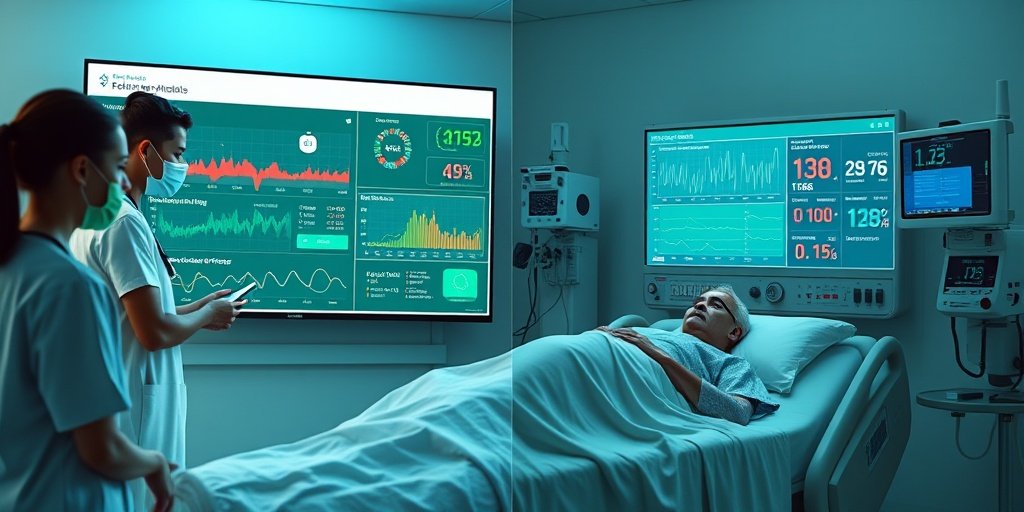⚡ Quick Summary
A recent study developed a machine learning model to predict 30-day mortality in patients with diabetes or hyperglycemia upon emergency department admission. The model demonstrated high sensitivity (86-97%) and specificity (86-94%), indicating its potential for improving patient outcomes.
🔍 Key Details
- 📊 Dataset: 74,611 patient visits from 34,280 unique patients
- 🧩 Features used: Laboratory values, age, triage category, time to doctor consultation
- ⚙️ Technology: Stochastic gradient boosting
- 🏆 Performance: Sensitivity 86-97%, Specificity 86-94%, AUC 0.84-0.93
🔑 Key Takeaways
- 📊 Machine learning can effectively predict short-term mortality in diabetic patients.
- 💡 Key predictors include laboratory values and patient demographics.
- 🏥 High sensitivity and specificity suggest the model’s reliability in clinical settings.
- 🌍 Study conducted across nine emergency departments in Region Skåne.
- 🔍 Positive predictive values identified mortality in 23% to 37% of cases.
- 🤖 Routine data collection can enhance patient monitoring and intervention strategies.
- 📈 AUC values indicate strong predictive performance of the model.

📚 Background
Patients with diabetes often face increased risks of complications, including prolonged hospital stays and higher mortality rates. The need for effective risk stratification tools in emergency settings is critical, as timely interventions can significantly improve patient outcomes. Machine learning offers a promising avenue for developing predictive models that leverage existing clinical data.
🗒️ Study
This cohort study utilized data from all nine emergency departments in Region Skåne between 2017 and 2018. The researchers aimed to create a machine learning model that could accurately predict 30-day mortality in patients with diabetes or hyperglycemia, focusing on various demographic and clinical factors.
📈 Results
The machine learning model, developed using stochastic gradient boosting, identified key predictors such as laboratory values (e.g., pH, lactate, CRP) and patient demographics. The model achieved a sensitivity range of 86-97% and specificity of 86-94%, with an area under the curve (AUC) ranging from 0.84 to 0.93. These results highlight the model’s potential for accurately identifying high-risk patients.
🌍 Impact and Implications
The findings from this study could significantly enhance the management of patients with diabetes in emergency settings. By implementing machine learning models, healthcare providers can better identify patients at risk of mortality, allowing for closer monitoring and timely interventions. This approach not only improves patient care but also optimizes resource allocation within healthcare systems.
🔮 Conclusion
This study underscores the transformative potential of machine learning in predicting short-term mortality among diabetic patients. By utilizing routinely collected data, healthcare professionals can enhance patient monitoring and intervention strategies, ultimately leading to improved outcomes. Continued research in this area is essential to refine these models and expand their applicability across various clinical settings.
💬 Your comments
What are your thoughts on the integration of machine learning in emergency care for diabetic patients? We would love to hear your insights! 💬 Leave your comments below or connect with us on social media:
Development and evaluation of a machine learning prediction model for short-term mortality in patients with diabetes or hyperglycemia at emergency department admission.
Abstract
BACKGROUND: Patients with diabetes admitted to emergency care face a higher risk of complications, including prolonged hospital stays, admissions to the intensive care unit and mortality.
AIM: To develop a machine learning (ML) model to predict 30-day mortality in patients with diabetes admitted to the emergency department (ED).
DESIGN AND SETTING: A cohort study utilizing data from all nine ED’s in Region Skåne 2017 to 2018. Totally 74,611 patient visits, representing 34,280 unique patients aged > 18 years with diabetes or hyperglycemia (glucose were > 11 mmol/L). The analysis focused on four groups, men and women aged 40-69 and ≥ 70 years.
METHODS: Stochastic gradient boosting was employed to develop a model predicting 30-day mortality. Variable importance was assessed using normalized relative influence (NRI) scores. Variables in certain hospitals were used to train the models, and the models were tested in other hospitals.
RESULTS: Key predictors included laboratory values (pH, base excess, pCO2, standard bicarbonate, oxygen saturation, lactate, CRP, and leukocytes), as well as age, triage category, and time to doctor consultation. The sensitivity of the models ranged from 86-97%, the specificity from 86-94%, and accuracy between 86% and 94%. The area under the curve (AUC) ranged from 0.84 to 0.93 and Cohen’s kappa ranged from 0.34 to 0.45. Positive predictive values accurately identified mortality in 23% to 37% of cases across the four groups.
CONCLUSIONS: A machine learning model based on routinely collected data in the ED accurately predicted 30-day mortality with high specificity and sensitivity. This approach shows promise in identifying high-risk patients requiring close monitoring and timely interventions.
Author: [‘Wändell P’, ‘Wierzbicka M’, ‘Sigurdsson K’, ‘Olofsson A’, ‘Wachtler C’, ‘Wessman T’, ‘Melander O’, ‘Ekelund U’, ‘Björkelund A’, ‘Carlsson AC’, ‘Ruge T’]
Journal: Cardiovasc Diabetol
Citation: Wändell P, et al. Development and evaluation of a machine learning prediction model for short-term mortality in patients with diabetes or hyperglycemia at emergency department admission. Development and evaluation of a machine learning prediction model for short-term mortality in patients with diabetes or hyperglycemia at emergency department admission. 2025; 24:383. doi: 10.1186/s12933-025-02954-8